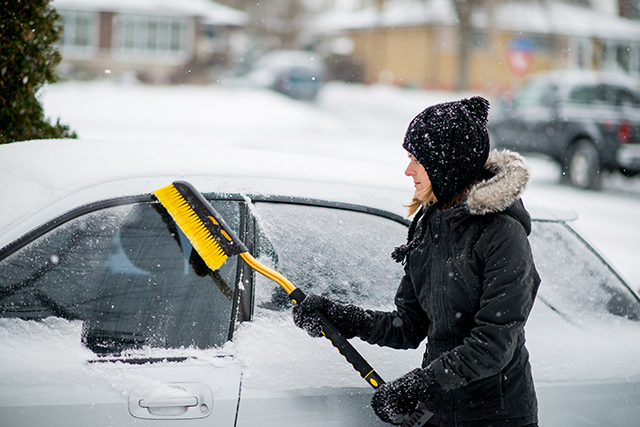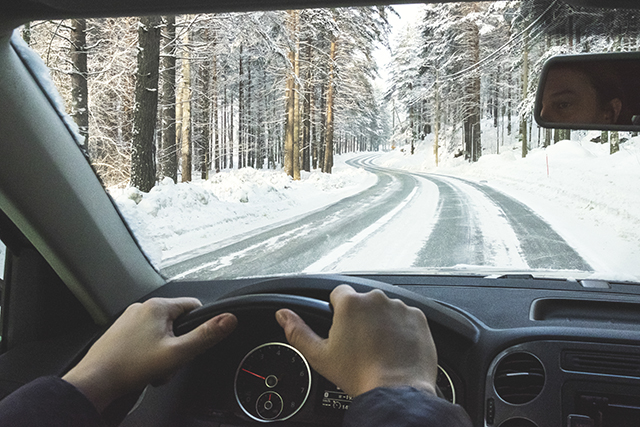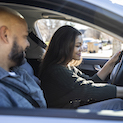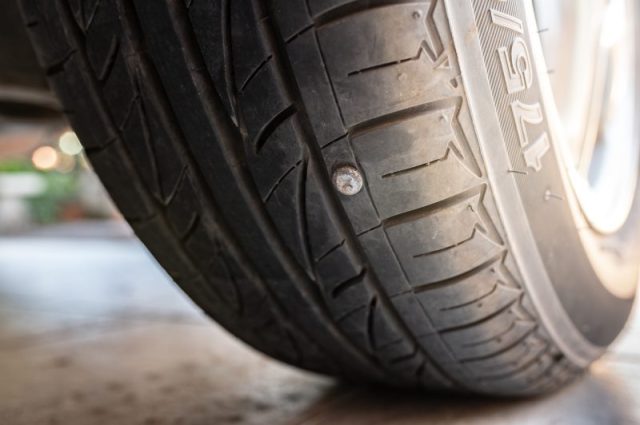Driving in inclement weather can be a challenge for even the most experienced drivers, but it can be especially daunting for new drivers. If your teen recently received a permit or driver’s license and has yet to experience driving in wintry conditions, these AAA driving instructor tips can help.
By preparing young drivers for winter conditions you’ll be making the roads safer for everyone.
Prepare the Vehicle
Young drivers should practice winter driving in a car that’s suitable for the weather. To have a properly winterized vehicle, consider switching to winter tires and winter windshield wiper blades. No matter which type of tire you opt for, be sure they are properly inflated and have plenty of tread.
Pro Tip: Test your young driver on how to change a tire.
Make sure your car is in peak operating condition and that you have it serviced before chilly weather returns. Check to make sure there’s plenty of antifreeze and windshield wiper fluid, and always keep at least half a tank of fuel in your vehicle during the winter.
Ensure young drivers have essential winter tools in the car, especially a shovel, ice scraper and an emergency kit. Additional supplies may include a blanket, spare winter clothes (gloves, hat, scarf, socks, etc.), a flashlight, bottled water and a first-aid kit.
Have your teen practice in the vehicle they are planning to drive, whether it’s a sedan, crossover, SUV or truck, because they all handle differently in slippery conditions. While anti-lock brakes and stability control are required by law, new drivers should also get familiar with any additional advanced safety features in the car. Features that rely on sensors, such as blind-spot and and lane-departure warnings, could be affected by winter weather conditions, so it’s important for them to practice with and without the technology. Remember, advanced driver-assistance systems are designed to work in conjunction with an engaged driver, not replace one.
Check out our story on the five best cars for winter driving, all of which boast important safety features that make driving during the winter a little easier.
Prepare the Driver
Teach young drivers how to properly brake while driving during the winter.
“When there is a light coating of snow or ice on roadways, drive into a large cul-de-sac or spacious parking lot with no obstructions in your path,” said Richard Field, a AAA Northeast Driving School instructor. “At low speeds have them apply the brakes firmly to gain experience on stopping distance, slippage and sliding as well as effect of the anti-lock braking system. Experiment by varying light to hard pressure on the brake pedal. Repeat while turning the steering wheel to understand understeer on slick roads.”
Drivers must start braking earlier during slippery conditions. Emphasize doing everything slowly and carefully. Never use cruise control or slam on the brake. Instead, tell them to take their foot off the gas, let the car slow and apply the brake gradually.
Another lesson for winter driving is to increase following distance between yourself and other drivers on the road, generally providing about four to 10 seconds of distance in between cars. This gives drivers extra time to react in case of ice or other slippery conditions.
“Regardless of whether the vehicle has front-, rear- or four-wheel drive, the best way to regain control in a skid is to take your foot off the accelerator and avoid slamming on the brakes, while continuing to look and steer in the direction you want to go,” said AAA’s Car Doctor John Paul. “Wait for the front wheels to grip the road again. As soon as traction returns, the vehicle will start to steer; you can then gently apply the accelerator. While all-wheel drive vehicles get you moving better in snow than front- or rear-wheel drive vehicles, they all stop the same way. Don’t become overconfident and drive faster than the road conditions safely allow.”
An additional option is enrolling your young driver in a AAA Driving School course. Our Driving School programs create lifelong safe drivers by presenting students with real-world, hands-on training. Program offerings vary by state, but courses are available in Connecticut, Massachusetts, New Jersey, New York and Rhode Island. All programs are licensed by each state’s departments of motor vehicles.

Teach Caution
The most essential driver instructor tip for winter driving? Practice, practice, practice.
“New drivers simply may have no experience in winter driving, and rather than learning via trial and error, will benefit greatly from supervised driving practice,” Field said.
Start with being a good example. Keep an eye on the weather report: Everyone should avoid unnecessary driving during certain winter conditions – new and more experienced drivers alike. Be safe and stay home during severe winter storms.
One intimidating factor of winter driving is the possibility of running into black ice. Familiarize your young driver with how to navigate this challenging condition, starting with these tips.
Get more winter driving tips from AAA.
Learn more about AAA Driving School.


















